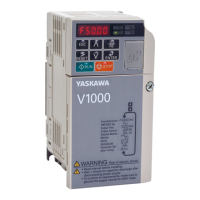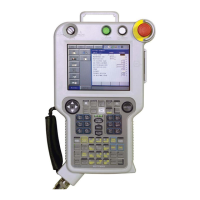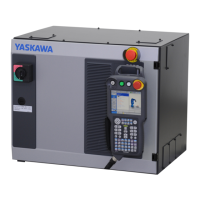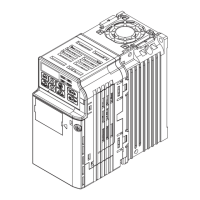u
Insufficient Starting Torque
Cause Possible Solutions
Auto-Tuning has not yet been performed (required for
vector control modes).
Perform Auto-Tuning. Refer to Motor Performance Fine-Tuning on page 356.
The control mode was changed after performing Auto-
Tuning.
Perform Auto-Tuning again.
Only Stationary Auto-Tuning was performed. Perform Rotational Auto-Tuning.
u
Motor Rotates after the Drive Output is Shut Off (Motor Rotates During DC Injection
Braking)
Cause Possible Solutions
DC Injection Braking is set too low and the drive
cannot decelerate properly.
• Adjust the DC Injection braking settings.
• Increase the current level for DC Injection Braking Current (b2-02).
• Increase the DC Injection Braking time at stop (b2-04).
The stopping method is set so that the drive coasts to
stop.
Set b1-03 (Stopping Method Selection) to 0 or 2.
u
Output Frequency is Not as High as Frequency Reference
Cause Possible Solutions
Frequency reference is set within the range of the Jump
Frequency.
• Adjust the parameters used for the Jump Frequency function (d3-01, d3-02, d3-03).
• Enabling the Jump Frequency prevents the drive from outputting the frequencies specified in
the Jump range.
Upper limit for the frequency reference has been
exceeded.
• Set the maximum output frequency and the upper limit for the frequency reference to more
appropriate values (E1-04, d2-01).
• The following calculation yields the upper value for the output frequency:
E1-04 x d2-01 / 100
Large load triggered Stall Prevention function during
acceleration.
• Reduce the load.
• Adjust the Stall Prevention level during acceleration (L3-02).
u
Sound from Motor
Cause Possible Solutions
Exceeded 110% of the rated output current of the drive
while operating at low speeds.
• If the output current rises too high at low speeds, the carrier frequency is automatically reduced
and causes a whining or buzzing sound.
• If the sound is coming from the motor, disable carrier frequency derating (L8-38 = 0).
• Disabling the automatic carrier frequency derating increases the chances of an overload fault
(oL2). Switch to a larger capacity motor if oL2 faults occur too frequently.
u
Unstable Motor Speed when Using PM
Cause Possible Solutions
The motor code for the PM motor (E5-01 or T2-02) is
set incorrectly (Yaskawa motors only).
Refer to Motor Performance Fine-Tuning on page 356 for details.
Drive is attempting to operate the motor beyond the
speed control range listed in the specifications.
Check the speed control range and adjust the speed accordingly.
Drive is attempting to operate the motor at 5% or less
of the speed reference value.
Use alternative motor if the drive is attempting to operate the motor at 5% or less of the speed
reference value.
Motor hunting occurs. Refer to Motor Performance Fine-Tuning on page 356 for details.
Hunting occurs at start. Increase the S-curve time at the start of acceleration (C2-01).
Too much current is flowing through the drive.
• Enter the correct motor code for the PM motor being used into E5-01.
• For special-purpose motors, enter the correct data to all E5 parameters according to the test
report provided for the motor.
6.10 Troubleshooting without Fault Display
412
YASKAWA ELECTRIC SIEP C710636 04D U1000 Industrial MATRIX Drive Technical Manual

